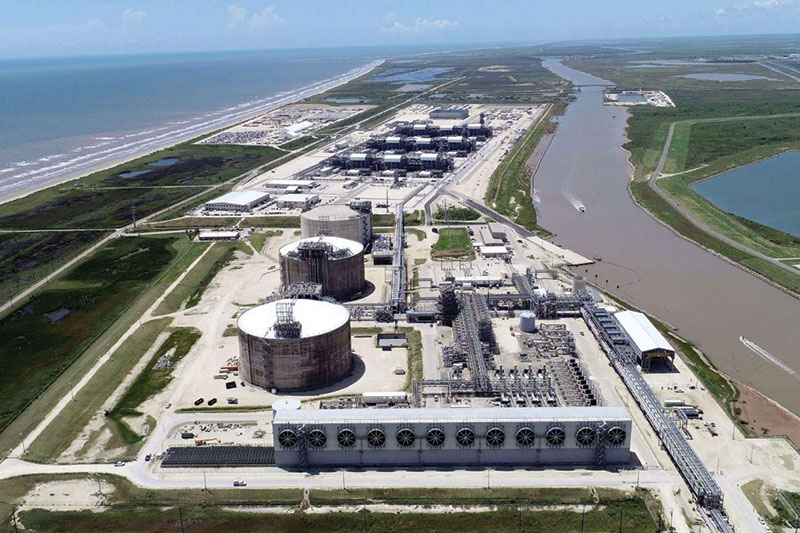U.S. Natural Gas Prices Surge to 5-Week High on Freeport LNG Feedgas Increase, Output Decline
(Reuters) — U.S. natural gas futures edged up about 1% to a five-week high on Wednesday on an increase in feedgas to the Freeport LNG export plant and a drop in output as pipeline maintenance trapped gas in Texas and producers continued to reduce drilling activities after prices collapsed to 3-1/2-year lows earlier this year.
Limiting price gains was the huge amount of surplus of gas in storage and negative spot power and gas prices in parts of Texas, California and Arizona seen over the past few weeks.
Front-month gas futures <NGc1> for May delivery on the New York Mercantile Exchange rose 1.3 cents, or 0.7%, to settle at $1.885 per million British thermal units (MMBtu), their highest close since March 6 for a second day in a row.
Analysts projected gas stockpiles were about 37% above normal levels for this time of year.
The U.S. Energy Information Administration (EIA) projected gas and power demand would both hit record highs in 2024, while gas output will drop for the first time since 2020 when COVID-19 pandemic lockdowns cut demand for the fuel. The EIA also projected that U.S. gas prices would be cheaper in 2024 than coal for the first time ever.
In the spot market, next-day gas prices at the Waha hub in the Permian Basin in West Texas fell from negative $1.20 on April 8 to negative $1.50 per MMBtu on April 9, their lowest since April 2020 for a second day in a row, according to data from SNL Energy on the LSEG terminal.
Over the past several weeks, daily power and gas prices in Texas, California and Arizona have traded below zero due to low demand, ample renewable sources of power and pipeline maintenance that trapped gas in Texas.
Supply and Demand
Financial firm LSEG said gas output in the Lower 48 U.S. states fell to an average of 98.9 billion cubic feet per day (Bcf/d) so far in April, down from 100.8 Bcf/d in March. That compares with a monthly record of 105.6 Bcf/d in December 2023.
On a daily basis, output was on track to drop by 3.9 Bcf/d over the past four days to a preliminary 12-week low of 96.1 Bcf/d on Wednesday. Energy traders have said preliminary data was often revised higher later in the day.
With warmer weather coming, LSEG forecast gas demand in the Lower 48, including exports, would fall from 100.9 Bcf/d this week to 96.4 Bcf/d next week. The forecast for next week was higher than LSEG's outlook on Tuesday.
Gas flows to the seven big U.S. liquefied natural gas (LNG) export plants slid to an average of 12.7 Bcf/d so far in April, down from 13.1 Bcf/d in March. That compares with a monthly record of 14.7 Bcf/d in December.
On a daily basis, LNG feedgas was on track to rise to a three-week high of 13.5 Bcf/d as the amount of gas flowing to Freeport climbs to 1.5 Bcf/d on Wednesday from 1.1 Bcf/d on Tuesday and an average of 0.8 Bcf/d over the prior seven days.
Analysts do not expect U.S. LNG feedgas to return to record levels until all three liquefaction trains at Freeport's plant in Texas return to service.
Freeport said in late March it expects Trains 1 and 2 to remain shut until May for inspections and repairs, while Train 3 was operating. Analysts, however, believe Freeport has already restarted at least one of the two trains shut for inspection and repairs. Each Freeport train can turn about 0.7 Bcf/d of gas into LNG.
Related News
Related News

- Keystone Oil Pipeline Resumes Operations After Temporary Shutdown
- Freeport LNG Plant Runs Near Zero Consumption for Fifth Day
- Biden Administration Buys Oil for Emergency Reserve Above Target Price
- Mexico Seizes Air Liquide's Hydrogen Plant at Pemex Refinery
- Enbridge to Invest $500 Million in Pipeline Assets, Including Expansion of 850-Mile Gray Oak Pipeline





Comments